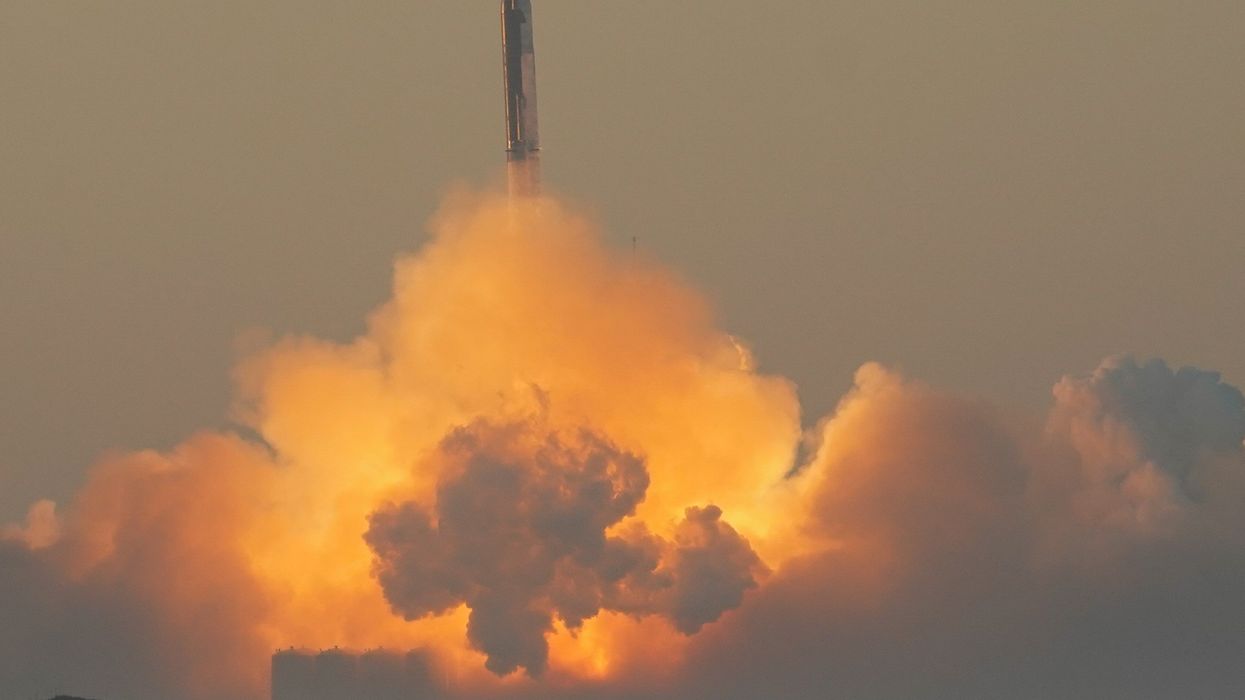SpaceX rockets rip open Earth's atmosphere causing bright glowing holes in the sky

SpaceX rockets has causing holes in the Earth's atmosphere
|REUTERS

The holes are 'red, roughly spherical, and visible to the naked eye for as much as 10 minutes at a time'
Don't Miss
Most Read
Latest
SpaceX rockets blasting into space are causing bright glowing holes in the sky, it has been claimed.
Bright aurora-like phenomena are being caused every time one of Elon Musk's spacecrafts breaks through Earth's upper atmosphere.
According to astrologers, the holes are "red, roughly spherical, and visible to the naked eye for as much as 10 minutes at a time" and are caused by the rockets burning their engines in the ionosphere.
Canadian astronomer Dr Erika Nesvold says that SpaceX "has been punching temporary holes in the ionosphere for years".
WATCH: SpaceX rocket launch earlier this year
"Rocket engines spray water (H2O) and carbon dioxide (CO2) into the ionosphere, quenching local ionisation by as much as 70 per cent. The F-layer of the ionosphere is particularly affected," she explained on social media.
"A complicated series of charge exchange reactions between oxygen ions (O+) and molecules from the rocket exhaust produce red photons at a wavelength of 6300 Å--the same colour as red auroras."
Scientists fear that the SpaceX holes caused have long term implications.
"We are seeing two to five of them each month,” said Stephen Hummel from the McDonald Observatory in Texas.

SpaceX has been launching rockets from Texas in the US
|REUTERS
And in a warning about the damage the space race can cause to the atmosphere, he added: "Their impact on astronomical science is still being evaluated."
They say that an increase in space launches in the future could lead to an increase in the frequency of the red glows in the sky and interfere with astronomical observations.
Nesvold highlighted that the atmospheric holes could cause "sudden GPS errors".
SpaceX last launched a rocket into space last weekend when its uncrewed spacecraft Starship, developed to carry astronauts to the moon and beyond, took off from Boca Chica in Texas.
But the rocket's Super Heavy first stage booster, though it achieved a crucial manoeuvre to separate with its core Starship stage, exploded over the Gulf of Mexico shortly after detaching, a SpaceX webcast showed.
Meanwhile, the core Starship stage boosted further toward space, but a few minutes later a company broadcaster said that SpaceX mission control suddenly lost contact with the vehicle.
"We have lost the data from the second stage... we think we may have lost the second stage," SpaceX engineer and livestream host John Insprucker said. He added that engineers believe an automated flight termination command was triggered to destroy the rocket, though the reason was unclear.
About eight minutes into the test mission, a camera view tracking the Starship booster appeared to show an explosion that suggested the vehicle failed at that time. The rocket's altitude was 91 miles (148 km).
The launch was the second attempt to fly Starship mounted atop its towering Super Heavy rocket booster, following an April attempt that ended in explosive failure about four minutes after lift-off.










